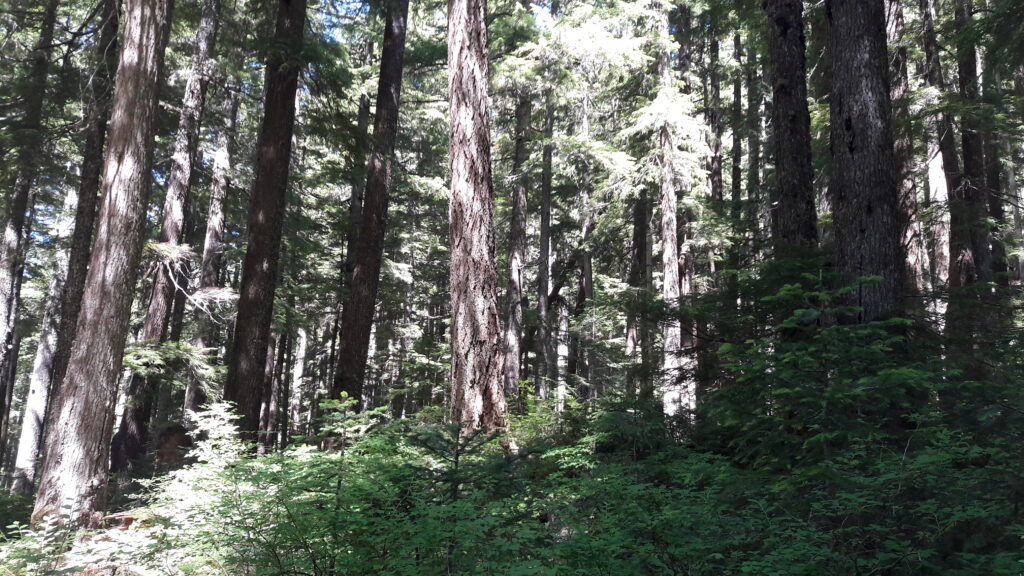Original post from Feb 13, 2021
I’ve been writing about listening to trees and plants and places and all kinds of creatures, and even artifacts – and I assume that to most western ears this sounds like projection at best and hallucination at worst. Obviously we can insist that all sorts of things we imagine are true, and in these days of fake news and anti-science, everyone knows how dangerous that can be. If we can’t even agree on an epistemological basis of objective reality, how can we expect to work together at all, and where does that leave us?
What’s real and what’s not? How do we know? In the Western view, it’s customary to open this discussion with the question, “If a tree falls in the woods and no one is around to hear it, does it make a noise?” I have witnessed this discussion many times, often during lectures at respected universities. Something about the question always annoyed me, but it took me years to wake up from a concept that pretends to be scientific and see how to respond. “Are you mad?! Have you ever been in the forest?! There is no such thing as a forest where no one is around to hear! Animals hear, birds hear (far better than us!), insects hear, even trees and plants themselves hear! A forest without anyone hearing is not a forest, it’s not even a desert! It might be outer space, but more likely a figure of Western imagination with no basis in reality, like a straight line. What arrogance!”

Today, more and more scientists are discovering the intelligence and connectedness of animals and plants. One day, doubting it will seem (again) as unfathomable as it used to to speculate that only white men have souls, or that animals have no feelings. More and more scientists are discovering what indigenous societies have always known – that everyone is intelligent in their own way and everything (everyone!) communicates if we only listen. Paul Stamets and Merlin Sheldrake write about fungi with eloquent expertise. Robin Wall Kimmerer and Monica Gagliano are just two of the scientists studying and writing about plant communication and intelligence. And many more contend – using science – that animals, fungi, and plants are sentient and intelligent. If so, how could everything else not be? How could ecosystems not be? Or our biosphere, Gaia, eons more experienced than us?
A tree cannot fall in the woods without anyone hearing, but there are certainly plenty of phenomena in the forest that humans – and certainly civilized humans – do not perceive. Two people can walk in the woods and experience completely different things. Stephen Harrod Buhner is among those who remind us that we can practice and learn to open our “gates of perception” and take in much more than is our habit, as our ancestors did. We all have a feeling sense, of impressions that are a combination of emotion and information, that our education did not develop, but rather suppressed. (What do we expect when all education happens in closed, silent, square rooms, while sitting still?) If we invite our senses to be more open, they will – after all, it is we who have closed them. Buhner also reminds us that indigenous cultures did not discover herbal remedies through trial and error. If you ask them how they did, they will say that the plants told them. (With incredulity at the very question.)
I can hear a little of the plants, not at the level of medical applications. What is clear is that the apparent contradiction between science and caring communication with other creatures is finally being disproved. Perhaps the difference between the two is that Western science developed as a very uncaring listening. Now, when groundbreaking scientists dare to engage the other-than-human from a position of respect, a picture emerges of intelligence, communication, and agency. Collaboration is possible. A bit ironic – I work* at a nonprofit whose explicit mission is to create a “shared society”. That’s exactly what I’m talking about – a shared society, shared creative process, and the emergent intelligence – but including everything (everyone!), not only humans.
Not only is there no contradiction between the scientific and animist approaches, the results don’t at all support the first over the second. The culture motivated by the scientific approach and the market economy is the one wreaking wholesale destruction of habitats, causing mass extinction, threatening the biosphere, and bringing itself to the brink of destruction by cutting off the branch on which it sits, while maintaining blanket denial. Empirically, it seems the map provided by animist culture is far more accurate.
